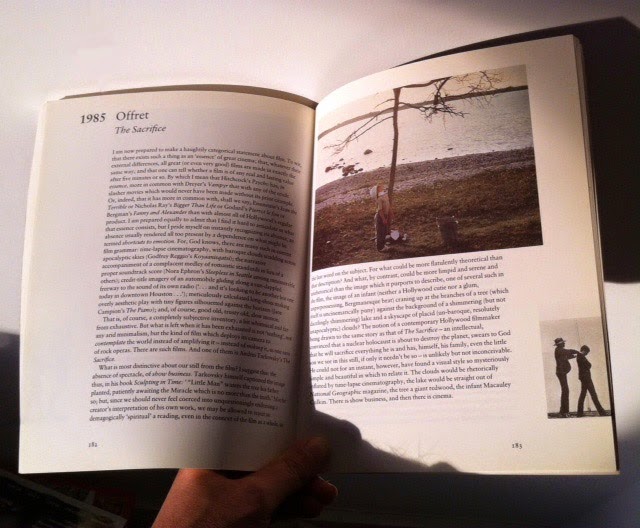In his enjoyable survey of one hundred years of cinema, Flickers, Gilbert Adair discusses a still from Andrei Tarkovsky’s 1985 film The Sacrifice, an image which Tarkovsky himself captioned (in his book Sculpting in Time) ‘Little Man waters the tree his father planted, patiently waiting for the Miracle which is no more than the truth’. Adair suggests that this caption, “flatulently theoretical”, is the opposite of the image, “limpid and serene”. What makes the image so effective is the absence of spectacle. We see a “shimmering (but not dazzlingly shimmering) lake and a skyscape of placid (un-baroque, resolutely unapocalyptic) clouds.” In the unlikely event that
I think this insight is equally true of other Tarkovsky films, e.g. the scenes around the dacha in Solaris. For Mirror Tarkovsky altered the landscape before filming it, growing buckwheat round the old house to accord with his memories, even though the current owners assured him the soil would not support it (when the buckwheat flowered, Tarkovsky recognised a good omen). For all its beauty, the landscape he shot in Mirror is very real, like the lake in The Sacrifice, and gives the scene an opportunity to work naturally on the viewer’s emotions.
[Postscript: since writing this it has become possible to embed YouTube clips in blog posts. I have therefore added above the 'wind scene' from Mirror.]

2 comments:
And wasn't the lake a sea, namely the Baltic Sea.
Yes, I think you're probably right, although you can see an opposite shore quite close.
Post a Comment